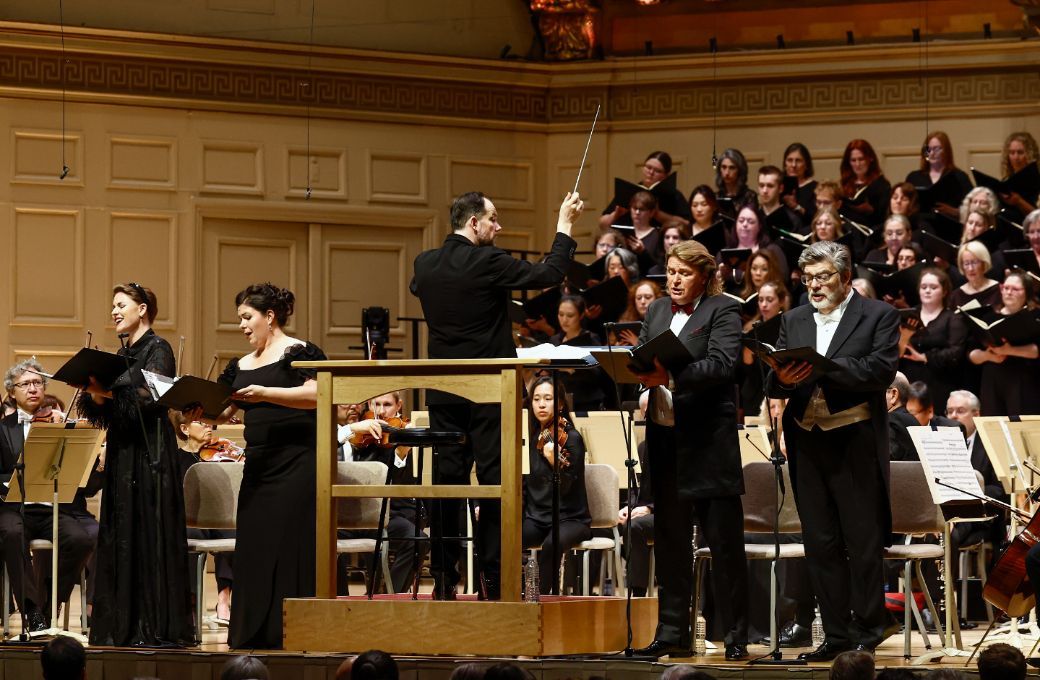A sense of occasion blanketed the Boston Symphony Orchestra’s recent performance of this Missa solemnis. The relative rarity of Beethoven’s sacred work, last heard in Symphony Hall 13 years ago, constituted an event in and of itself. But the concert carried special significance as a celebration of the orchestra’s legacy. It was performed at the hall’s inaugural evening on 15th October 1900, almost 125 years to the day of the current performance. Music Director Andris Nelsons pulled together an international complement of vocal soloists and the Tanglewood Festival Chorus as a capstone to a two-week festival that aimed to replicate the musical lives of Bostonians at the turn of the last century.

Despite the project’s noble goals, the performance itself remained frustratingly earthbound. Beethoven – a lapsed Catholic but a deep believer – imbued his Missa solemnis with mystical dimensions that often seem confounding and require precise attention to detail. His decision to set the Ordinary text for his mass speaks to an egalitarianism that would reach its apex with the monumental conclusion of the Ninth Symphony, composed a year later. It’s a work that wrestles with faith and doubt, filled with a yearning for peace and absolution.
Perhaps the Boston forces were confounded by the challenges of a work that isn’t a part of their core repertoire. Nelsons defaulted to a common coping mechanism when faced with a lack of ideas: he turned up the dial and let it rip. The result was often thrilling on a sonic level, but it often felt indistinguishable from this outfit’s performances of Shostakovich or Strauss. The approach worked well in the exultant Gloria and the thunderous Agnus Dei. But moments like the reverent Kyrie that needed more introspection – more solemnity, if you will – emerged instead with a punishingly loud, band-beaten quality.
There were satisfying individual moments, especially the ethereal duet for violin and flute embedded within the Sanctus. The woodwinds that opened the Kyrie were lyrical and transparent, and the brass and low strings brought an appropriately weighty quality to Beethoven’s fugal writing. Yet details remained hard to glean when the orchestra played together at forte, and while they never drowned out the soloists and choir, Nelsons certainly made them work for their audibility.
Leaderless after the departure of James Burton at the end of the Tanglewood Summer Season, the Tanglewood Festival Chorus was prepared by Anthony Blake Clark of the Dallas Symphony. As with their instrumental counterparts, the choir sounded regal and enthusiastic when singing at full volume, but the dramatic dynamic shifts preferred by Beethoven landed with less smoothness than necessary (the decrescendos in the Kyrie were a rough ride). Passages for sopranos and tenors also emerged with an unappealing, pale squawkiness.
Debuting soprano Eleanor Lyons deployed her bright, penetrating soprano to fine effect, often introducing a dramatic gravity to the proceedings that were absent elsewhere. She was matched well by tenor Klaus Florian Vogt, whose precise intonation and gleaming tone suited the sacred dimensions of the work. Bass Franz-Josef Selig’s mellow singing throughout the performance culminated in an imposing, stentorian introduction to the Agnus Dei. Mezzo-soprano Wiebke Lehmkuhl, also making her local debut, frequently sounded overparted compared to her colleagues.


